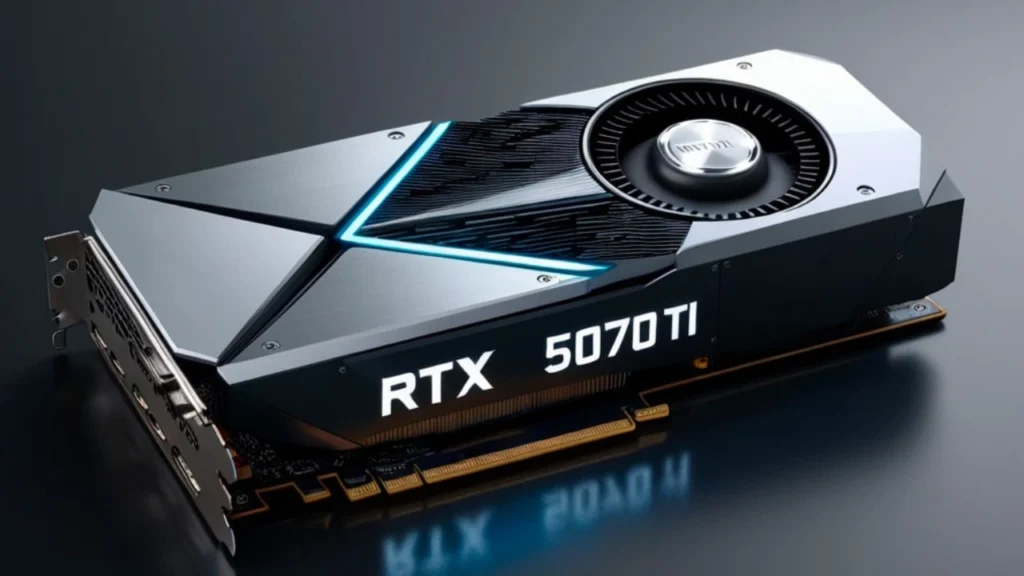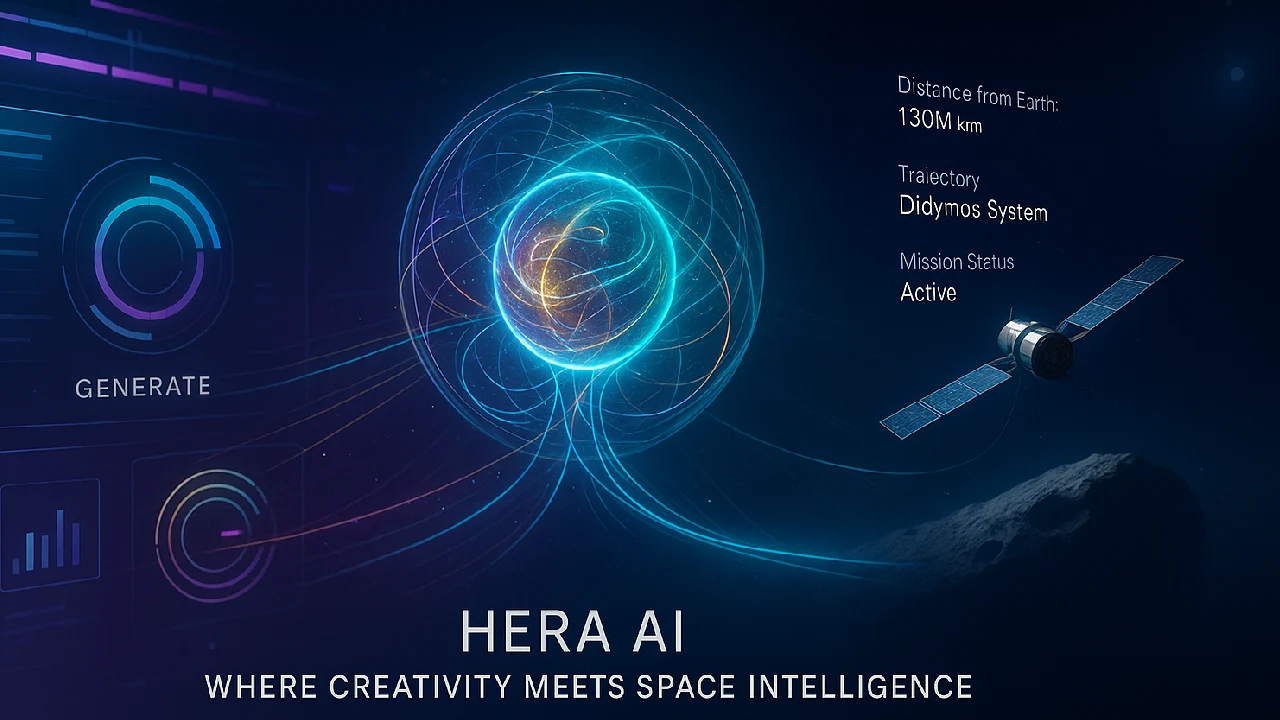At a lower price, the RTX 5070 Ti is a Blackwell-powered GPU with 8960 CUDA cores, DLSS 4, and 16GB GDDR7. It offers performance close to 4080 for 4K gaming and creative jobs.
One of the most talked-about NVIDIA Blackwell GPUs for the next generation is the RTX 5070 Ti. It was made for serious gamers and creators and offers near-flagship performance at a price point below the high-end. How smart is it, though? Is it just a re-skinned 4080?

What Powers the RTX 5070 Ti?
The 5070 Ti is made with TSMC’s N4P process and is based on the Blackwell GB203-300 GPU die. It is more efficient than the Ampere and Ada Lovelace models.
Key specs include:
- 8,960 CUDA cores
- 16GB of GDDR7 VRAM with a 256-bit memory bus
- 28 Gbps memory speed, delivering 896 GB/s bandwidth
- Base clock: 2,300 MHz | Boost clock: 2,452 MHz
- TGP: 300W | Recommended PSU: 700W
- Connects via PCIe 5.0 x16
With more memory and faster data paths, it’s clear that it was made to handle both creative tools and 4K games without any problems.
AI and Ray Tracing Go Next-Level
DLSS 4 with Multi-Frame Generation (MFG) is one function that stands out. DLSS 4 is different from standard upscaling because it uses AI to make multiple frames between rendered ones. This makes frame rates much faster, especially at high resolutions.
The 5th-generation Tensor Cores work best with low-precision AI tasks because they handle sub-8-bit formats like MXFP4 and MXFP6. This is also the first standard GPU with AMP (AI Management Processor), which takes scheduling off of the CPU to make it easier to switch between tasks and respond quickly, especially in AI-driven apps.
The 4th-generation Ray Tracing Cores have better intersection engines that let you make lighting and shadows more realistic without slowing down your frame rate.
Performance You Can Feel
In real-world gaming tests:
- The 5070 Ti outperforms the 4070 Ti Super by 8%–12% on average at 1440p and up to 20%+ at 4K
- It matches or slightly edges the RTX 4080 in many titles—earning the nickname “4080 V3”
- Compared to the 5080, it’s around 10–15% slower, but significantly cheaper
- In ray-traced games like Cyberpunk and Black Myth, it holds its own, especially when DLSS is active
If you compare the 5070 Ti to AMD’s RX 7900 XTX, it does much better at ray tracing. However, based on the game and resolution, it may not be as good at raw rasterization.
For artists, the 5070 Ti is great for rendering in Blender, encoding videos, and making AI models. It can also send files up to 60% faster than last-generation cards.
Cooling & Design: No Founders Edition, But Plenty of Beefy Builds
Since NVIDIA didn’t make a Founders Edition, AIB partners like ASUS, MSI, Gigabyte, and Zotac have made a lot of different styles. These aren’t small GPUs; they have triple-fan fans, bigger heat sinks, and thick cards.
Some models include:
- ASUS Prime RTX 5070 Ti with a subtle, non-RGB aesthetic
- MSI Ventus 3X known for its quiet thermals and neutral design
- RGB-loaded variants from Gigabyte and Colorful for flashy setups
All cards use the 16-pin power connector, so you may need an adapter for older PSUs.
Pricing and Real-World Availability
The MSRP is $749, which is less than what the 4070 Ti cost when it first came out. As for prices in real life, they’ve been anywhere from $830 to over $1,000, based on the brand and the area.
Why the markup?
- No Founders Edition means NVIDIA didn’t anchor pricing directly
- Limited stock and high demand
- Scalpers and early adopters willing to pay extra
This product is a great deal if you can get it at MSRP or a small markup. Prices that are too high, on the other hand, quickly lose value.
Should You Buy the RTX 5070 Ti?
Buy it if:
- You want 4080-class performance for less
- You’re upgrading from a 30-series or older card
- You care about DLSS 4, ray tracing, or creative workloads
- You find it close to MSRP
Skip it if:
- You already own a 4080 / 4080 Super
- You only game at 1440p and don’t need high-end features
- You’re seeing prices above $950 — better options exist
RTX 5070 Ti vs RTX 5080 – Spec & Performance Breakdown
| Category | RTX 5070 Ti | RTX 5080 |
|---|---|---|
| Architecture | Blackwell (GB203) | Blackwell (GB202) |
| CUDA Cores | 8,960 | 11,520 |
| Memory (VRAM) | 16GB GDDR7 | 20GB GDDR7 |
| Memory Bus | 256-bit | 320-bit |
| Bandwidth | 896 GB/s | 1,120 GB/s |
| DLSS Version | DLSS 4 with Multi-Frame Generation | DLSS 4 with Multi-Frame Generation |
| Ray Tracing Cores | 4th Gen | 4th Gen |
| Tensor Cores | 5th Gen | 5th Gen |
| AI Scheduler (AMP) | Yes | Yes |
| Boost Clock | 2,452 MHz | ~2,550 MHz (varies by AIB) |
| TGP (Power Draw) | 300W | 350W |
| PCIe Interface | PCIe 5.0 x16 | PCIe 5.0 x16 |
| MSRP (USD) | $749 | $1,199 (expected) |
| Real Price Range | $830–$1,000+ | $1,199–$1,300+ |
| Performance (4K) | Very high – close to RTX 4080 | ~10–16% faster than 5070 Ti |
| Efficiency | Strong | Good, but higher power usage |
| Best For | 1440p/4K gaming, AI creation | Maxed-out 4K, future-proof setups |
| Upgrade Verdict | Best value if near MSRP | Better only if budget allows |
Final Take
The RTX 5070 Ti blurs the line between upper midrange and flagship GPUs by offering top-notch 4K games, cutting-edge AI features, and strong creative performance. It’s Nvidia’s most “future-ready” 70-class card ever.
But price has a lot to do with worth. Since it costs $749, it’s a clear choice. It’s harder to explain when it costs $1,000 or more, especially since Super cards and AMD’s next-gen options are on the way.
This could be the best GPU you buy all year if you can find one close to MSRP in the middle to late 2025.







